With their beautiful foliage and tropical feel, it’s easy to see why banana trees make such great additions to a landscape. Fortunately, living in a less than summery climate doesn’t prevent you from having these gorgeous plants in your garden. There are plenty of hardy banana tree options that fare extremely well in colder weather.
Most cold hardy banana trees belong to the genus Musa and can survive and overwinter in hardiness zones 4 to 9. They are large, leafy herbaceous perennials and usually only live for long enough to fruit and flower. They are mainly grown as ornamental plants and not for their fruit harvest.
Cold hardy banana trees are not difficult to grow, as long as you do your research before you plant them. In this post, we’ll look at the different types of cold hardy banana trees and how to care for them.
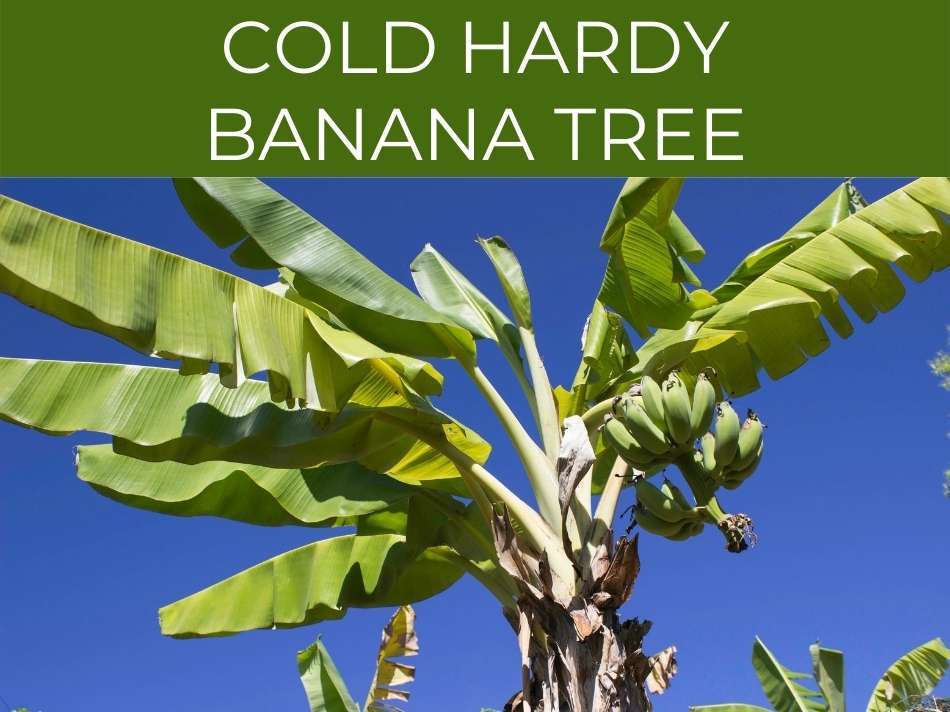
Cold Hardy Banana Tree
Bananas are one of the most popular fruits in the world.
They’re grown in tropical regions around the world, and although they do grow well outside temperate zones, it’s not always easy to provide them with optimal care and convenience.
Cold hardy banana tree varieties are different from other banana tree varieties, because cold hardy varieties are grown outside their more typical tropical climates.
As long as you select a cold-hardy variety, provide them with optimal care, and protect them from extremely low temperatures, they can grow well–even down to 25F temperatures.
For example, the Dwarf Cavendish is a variety of banana tree that can survive and grow well in colder climates and conditions than other types.
Dwarf Cavendish are cold-hardy to 25F, and can be grown in USDA zones 10a-11. It’s essential to treat your Dwarf Cavendish banana tree properly, by providing it with adequate water and nutrients during the winter months.
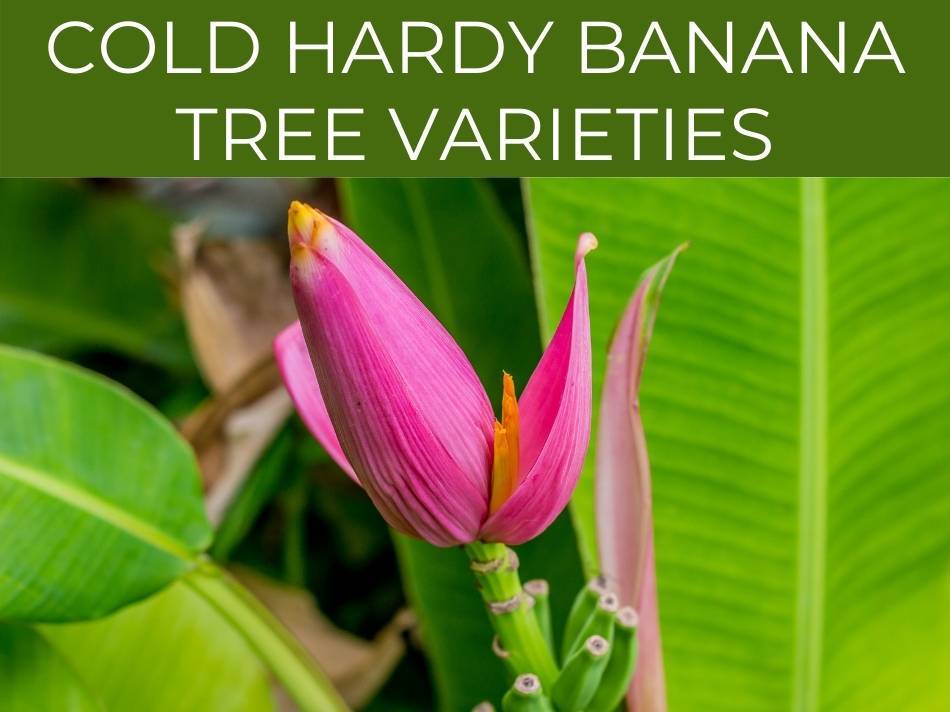
Cold Hardy Banana Tree Varieties
There are several varieties of cold hardy banana trees available to buy and grow at home.
Some are better known than others and more readily available for purchase.
While there are plenty of banana varieties in the Musa genus, we’ll only be looking at those that are the most cold hardy.
The most common cold hardy banana tree varieties are:
- Dwarf Cavendish
- Japanese fiber banana
- Golden Lotus or Chinese Yellow
- Pink Banana
- Sikkim Banana
If you’re interested in smaller varieties, check out the complete article on dwarf banana trees.
The most resilient (and well-known) is the Musa basjoo, also known as the Japanese Fiber banana.
This plant is native to South-East Asia and can become extremely large, reaching heights of up to 18 feet (5.5 meters).
A second cold hardy banana tree, also hailing from the genus Musa, is the Golden Lotus or Chinese Yellow banana plant (Musella lasiocarpa).
It is famous and well-loved for its long-blooming, large yellow flowers, and is native to Yunnan, China.
The Musa velutina, or pink banana, is a cold hardy species that blooms earlier than its cousins, albeit to very seedy, blush-colored fruit.
Finally, there is the little-known Sikkim banana (Musa sikkimensis), hailing from the Himalayan range of North India.
This particular tree produces edible fruit while being able to withstand extreme weather.
It is also referred to as the Darjeeling banana.
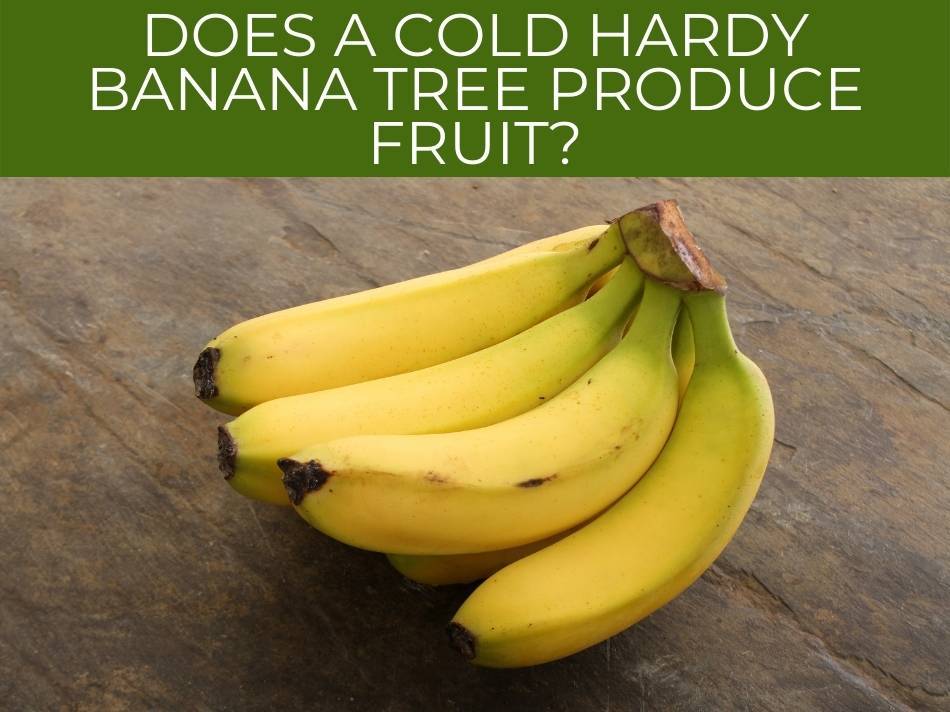
Does a Cold Hardy Banana Tree Produce Fruit?
Each cold hardy banana variety produces fruit, but several factors come into play when it’s time for these plants to bud.
In ideal growing conditions, cold hardy banana trees will produce fruit that can be eaten, although not all will enjoy their sweet-sharp taste.
Indeed, Musa bananas are considered a dessert banana or a delicacy.
In cooler weather, cold hardy bananas may not be able to bud and therefore will not produce fruit.
They may also die back for the winter before their fruit has a chance to ripen or grow completely, thereby making them inedible.
The process from spring recovery to fruiting can take a few months longer than a cold climate will necessarily allow for.
You might also want to check out the complete guide to cold hardy fig trees.
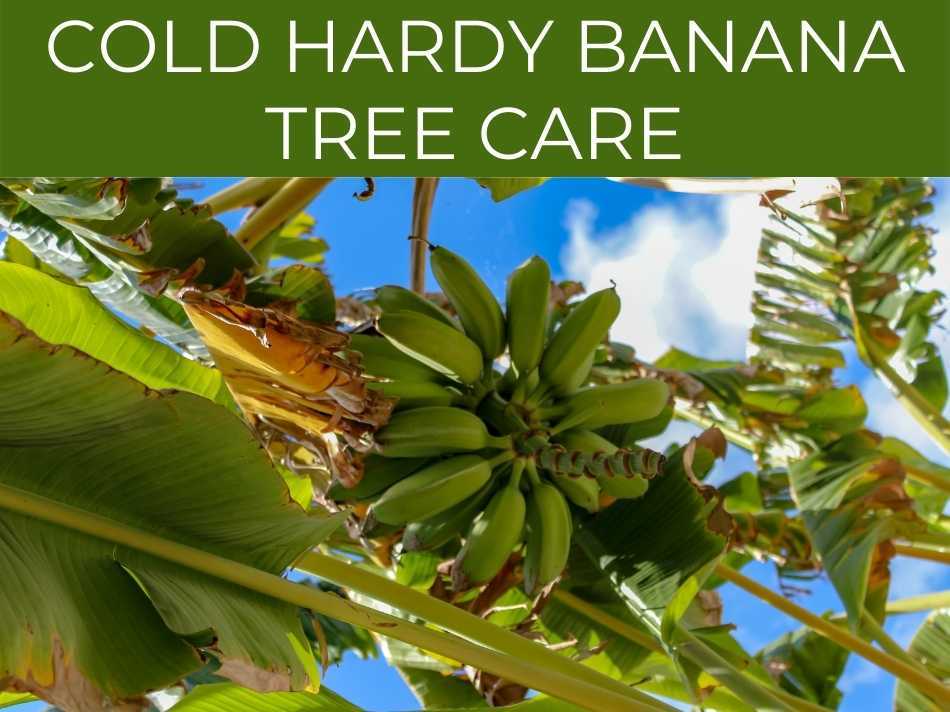
Cold Hardy Banana Tree Care
One of the best things about cold hardy banana trees is how easy they are to look after.
This makes them a great choice for both hobby gardeners and experts alike.
Given their large size, banana trees need quite a bit of space in the garden.
They grow best in direct sunlight, so try to position your plants in a spot that gets at least 6 to 8 hours of sun during the day.
Cold hardy bananas need lots of water, especially during their growing season, as they tend to expand in size quite rapidly.
They also require well-draining soil to reduce the risk of root rot.
To keep your cold hardy banana plants as happy as possible, you can give them a little extra TLC with a nitrogen-based fertilizer applied twice during the summer.
If you’re curious, you can find out if plants can actually grow without sunlight.
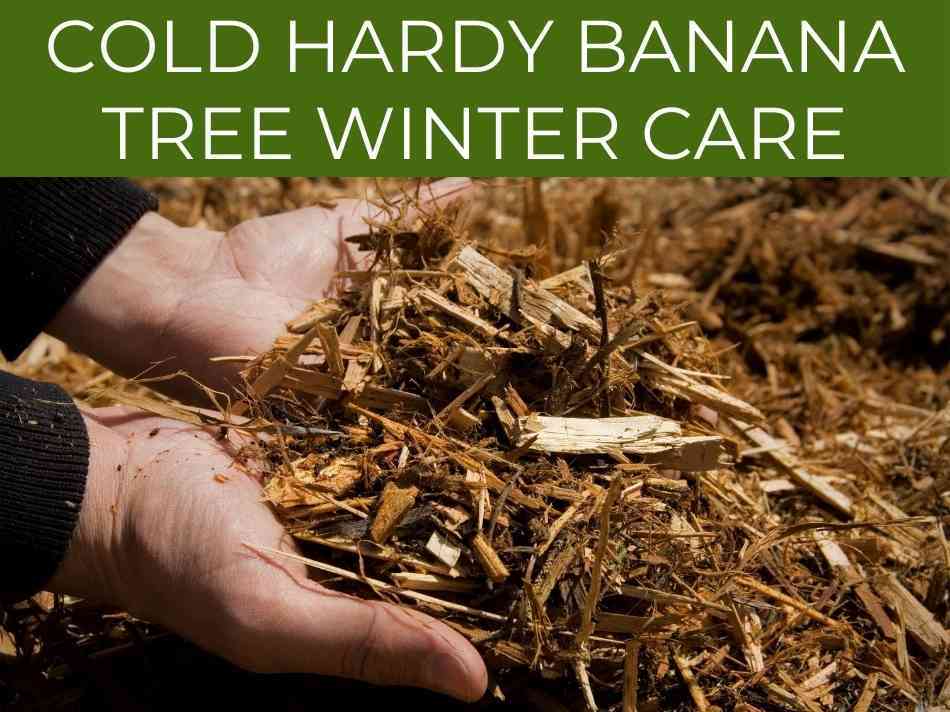
Cold Hardy Banana Tree Winter Care
To see your bananas through the cold months of the year, you need to prepare to overwinter them.
Luckily, this is a really simple process and goes a long way to keeping them safe for the spring.
As the first frosts arrive, you’ll likely notice your cold hardy bananas begin to die back.
This is perfectly normal and does not mean your plant is dying.
To overwinter cold hardy bananas, their leaves need to be cut back until only the plant’s crown remains roughly 10 inches (25 centimeters) above ground.
Then, you will need to cover the crown with a thick layer of good-quality mulch.
This will keep the ground temperature warm and protect the crown from frost.
Once winter is over and the last threat of frost has dispersed, you can uncover the crown to allow for regrowth.
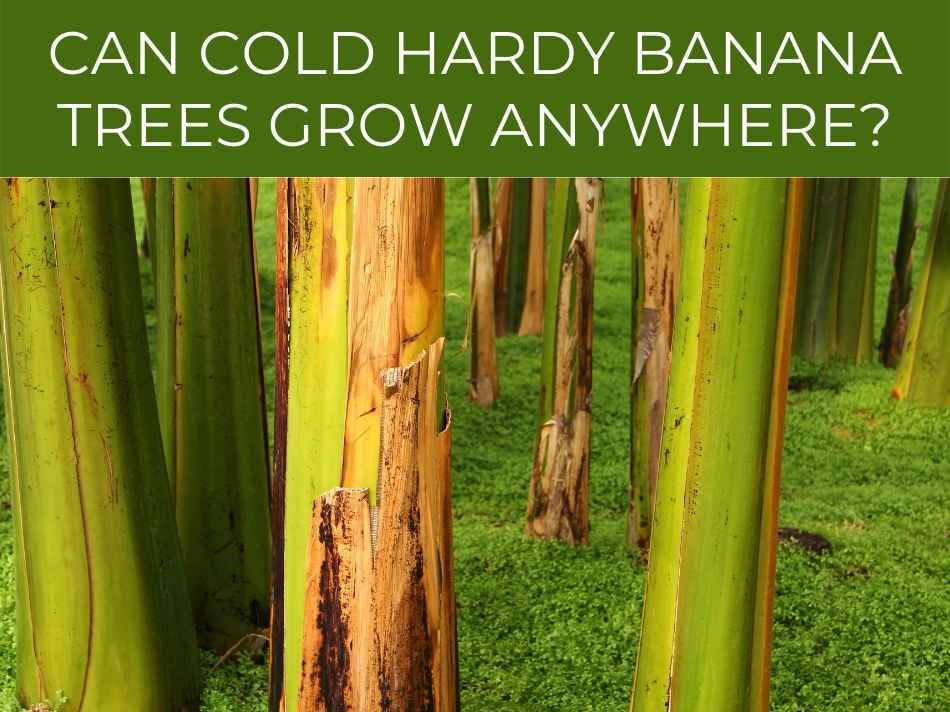
Can Cold Hardy Banana Trees Grow Anywhere?
Cold hardy banana trees can be grown all over North America, irrespective of climate.
This is what makes them such a great choice of showy ornamental plants.
With that being said, the colder the climate in your area, the less likely your Musa banana tree is to produce edible fruit or any fruit at all.
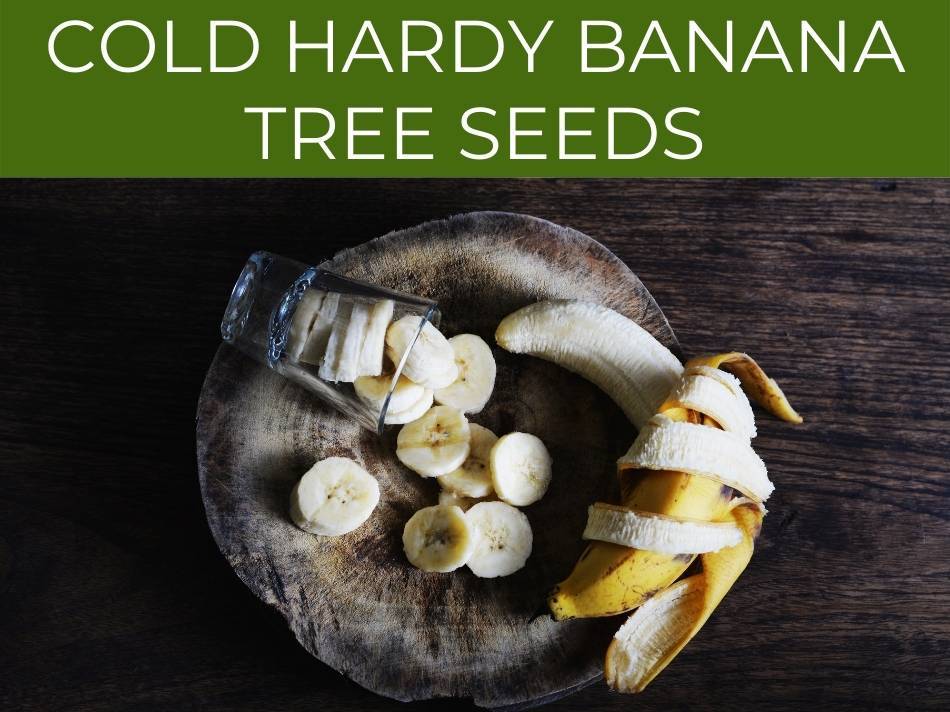
Cold Hardy Banana Tree Seeds
You’ve probably noticed that the bananas you buy at the grocery store don’t contain seeds.
This is because commercial bananas are specifically produced not to contain them.
Cold hardy banana trees, on the other hand, produce fruit full of seeds.
They can also be grown from seed, and while it takes a bit of effort, it can be exceptionally rewarding.
Cold hardy banana tree seeds can be purchased from your local nursery or online seed suppliers.
They take a very long time to germinate–sometimes several months–so you will need to be patient and careful.
Seeds should be soaked for up to 48 hours before planting in well-draining top-quality soil.
From there, they need exposure to sunlight and cooler temperatures during the day and night, respectively.
It may take a few months before you see any growth.
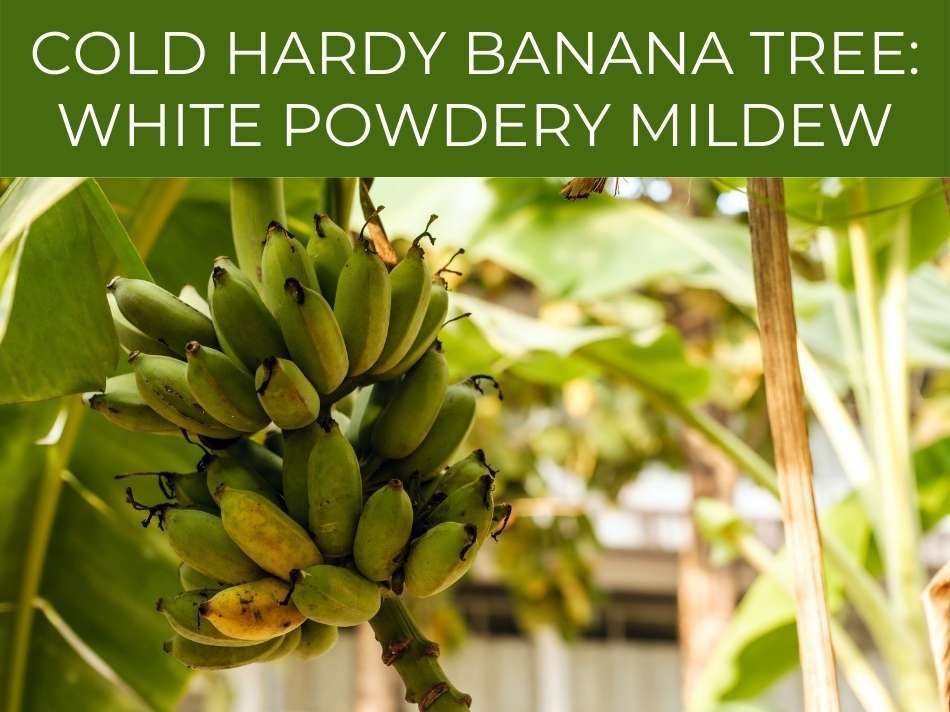
Cold Hardy Banana Tree: White Powdery Mildew
White powdery mildew is a normal and common occurrence in cold hardy banana trees, and the good news is that it’s pretty harmless.
If you’ve noticed a white substance on the stem or leaves of your banana tree that looks like powdered sugar, powdery mildew is most often the cause.
Powdery mildew on cold hardy banana trees is most often found in regions with warm days and cool, damp nights.
To get rid of powdery mildew, you can cut back infected leaves or treat your plants with horticultural oil.
It results from a fungus that overwinters in plant stems and thrives and spreads, subsequently, when spring bursts forth.
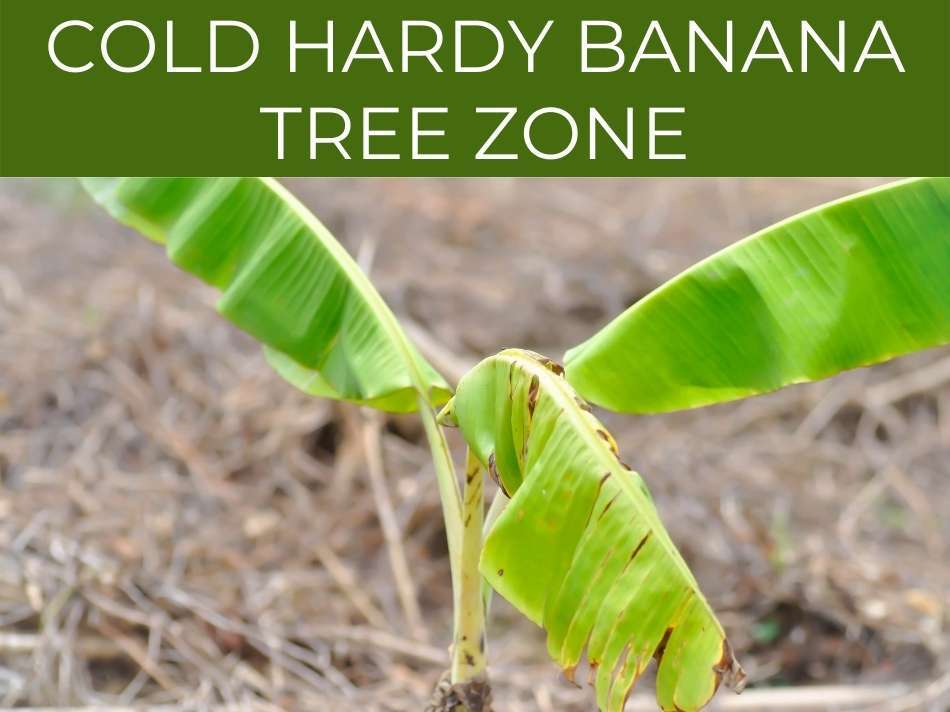
Cold Hardy Banana Tree Zone
Cold hardy Musa banana trees should have no problem growing in US hardiness zones 4 to 9.
Let’s take a look at what to expect with each zone’s temperatures.
Zone 4
At temperatures of -20F to -30F, you’ll need to invest in the hardiest of the banana varieties, such as the Musa basjoo or the Darjeeling banana.
Cold hardy bananas will struggle to grow in lower temperatures than this.
Zone 5
As with Zone 4, bananas grown in Zone 5 will need to be of the hardier species and carefully overwintered to ensure regrowth in the spring.
Applying fertilizer during summer will better equip their soil for harsh temperatures.
Zone 6
From 0F to -10F, you can branch out into our species of Musa bananas.
These climates probably won’t allow for fruiting, but you’ll end up with a beautiful ornamental.
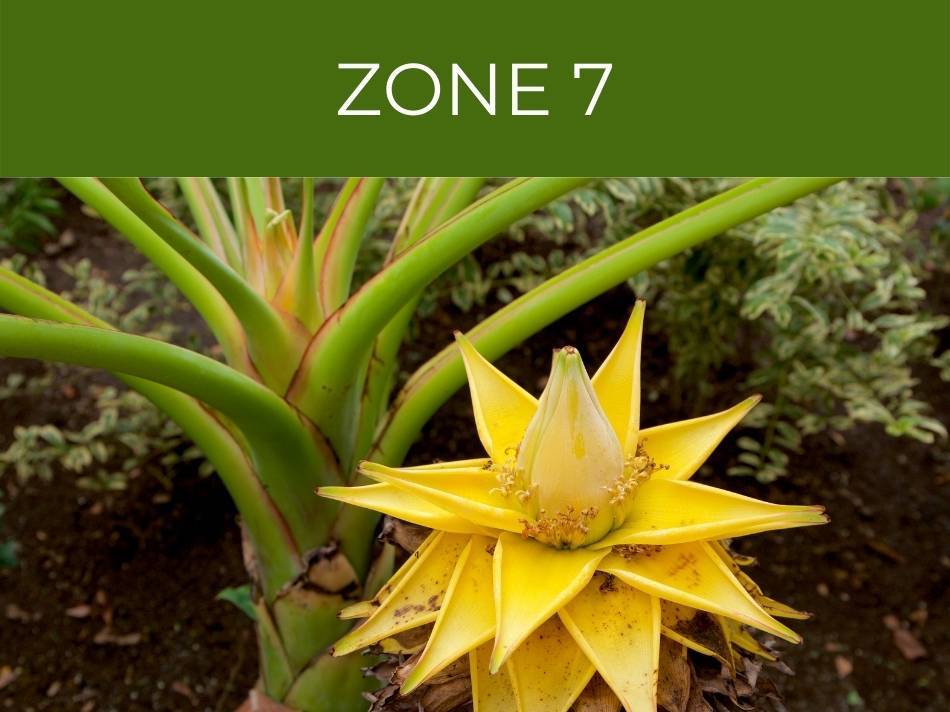
Zone 7
The Chinese Yellow is a great choice for gardeners living in Zone 7.
They adapt well to these climes and can even self-insulate their crowns with their dying leaves in the winter, keeping them safe for spring.
Zone 8
In Zone 8, you’ll find your cold hardy banana species thriving.
This weather is ideal for the warm days and cool nights that banana plants enjoy.
You may even see some fruit.
Zone 9
Hardiness Zone 9 is within the range for growing standard bananas, so cold hardy bananas are just as inclined to do well.
In Zone 9, your banana trees should thrive and reach great heights.


